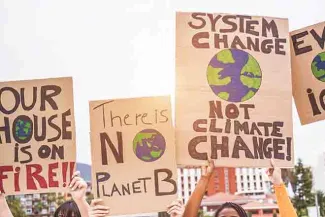
EarthTalk - Is global warming making parts of the world uninhabitable?
© iStock
Dear EarthTalk:
Is global warming making parts of the world uninhabitable?
L.G., via email
Global warming refers to the long-term rise in the Earth’s average temperature, due primarily to human activities like burning fossil fuels, deforestation and industrial processes. Understanding its impact on the habitability of specific regions is crucial as the climate crisis intensifies, as is assessing the risks to human health, economic stability and social structures.
Current climate conditions show a worrying trend of ever-increasing temperatures, more frequent and severe heat waves and unpredictable weather patterns. Projections indicate that if these trends continue, many regions, particularly tropical and subtropical ones, could become uninhabitable. Indeed, parts of South Asia, the Middle East and North Africa are at risk of extreme heat levels beyond human survivability. In areas where heat and humidity combine, it could surpass the threshold for human survival, making outdoor activities and even basic survival impossible without significant adaptation.

© iStock - DisobeyArt
The health risks associated with global warming are particularly acute in these vulnerable regions. Extreme heatwaves, like those already occurring in parts of India and the Persian Gulf, can lead to widespread illness and death. Higher temperatures also exacerbate air pollution, increasing respiratory and cardiovascular problems. Climate change also facilitates the spread of diseases by altering the habitats of carriers like mosquitoes, heightening the risk of diseases like malaria and dengue fever. Vulnerable populations, including the elderly and those with preexisting conditions, are particularly at risk.
Economic losses due to climate change may also disproportionately concentrate in specific areas. Low-lying coastal regions, as in Bangladesh, the Pacific Islands and parts of the Southeastern U.S., are facing rising sea levels that could displace millions of people. The resulting loss of infrastructure, agricultural land and freshwater resources could lead to severe economic downturns and increased social instability. Climate-induced displacement is already forcing populations to migrate, leading to conflicts over resources in both the affected areas and the regions they move to.
Reducing carbon emissions is critical to mitigate these impacts. Transitioning to renewable energy sources, improving energy efficiency and protecting forests are especially needed. Adaptation measures, like building resilient infrastructure and developing early warning systems for extreme weather events, will also be necessary. International cooperation and policy changes are essential to effectively address the global nature of climate change and protect the most at-risk regions.
CONTACTS
- Heat is testing the limits of human survivability. Here’s how it kills, www.cnn.com/2024/07/29/climate/heat-survivability-health-death-intl/index.html
- Climate change report https://whyy.org/articles/un-ipcc-climate-change-report-uninhabitable-planet-code-red/;
EarthTalk® is produced by Roddy Scheer & Doug Moss for the 501(c)3 nonprofit EarthTalk. See more athttps://emagazine.com. To donate, visit https://earthtalk.org. Send questions to: question@earthtalk.org.















